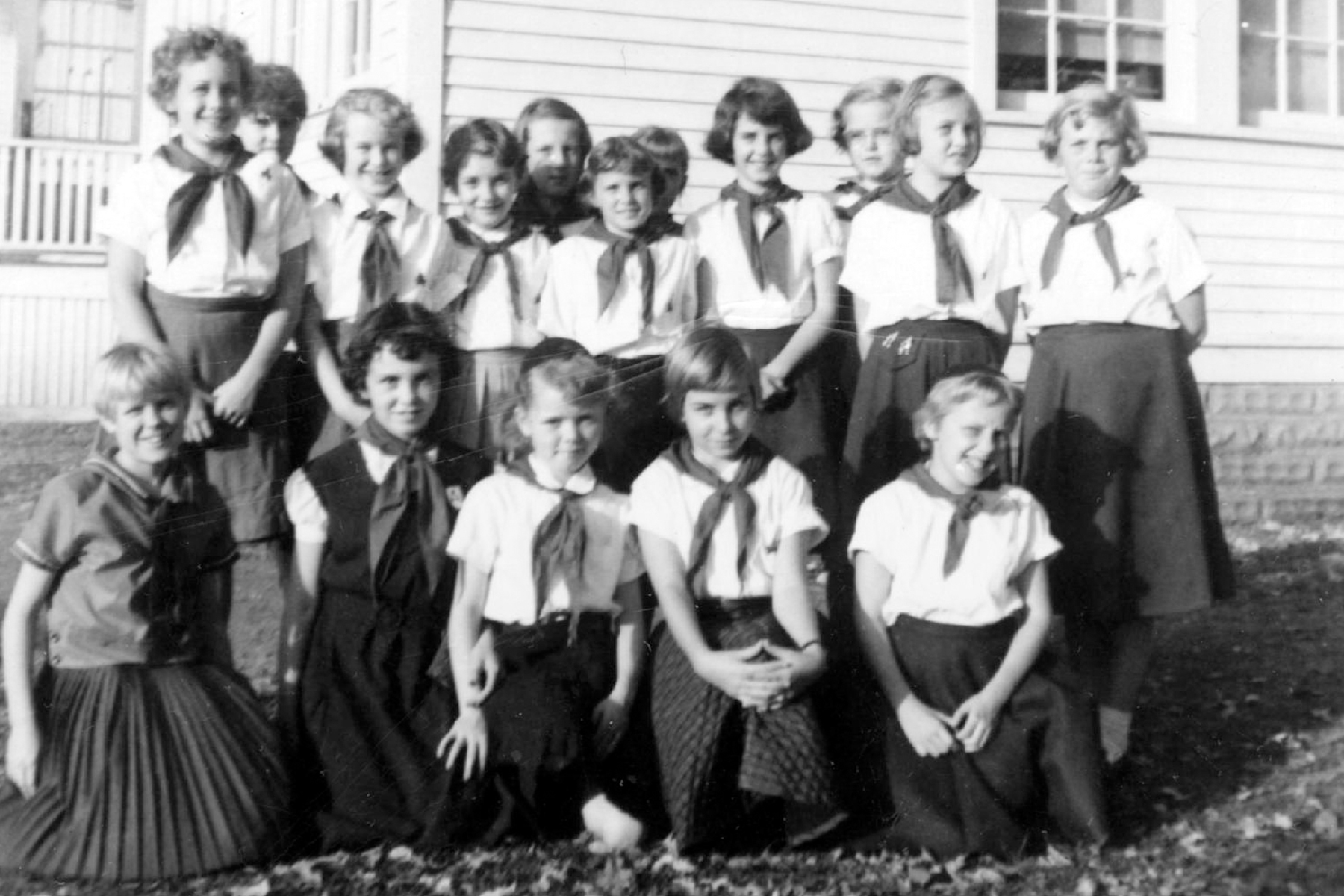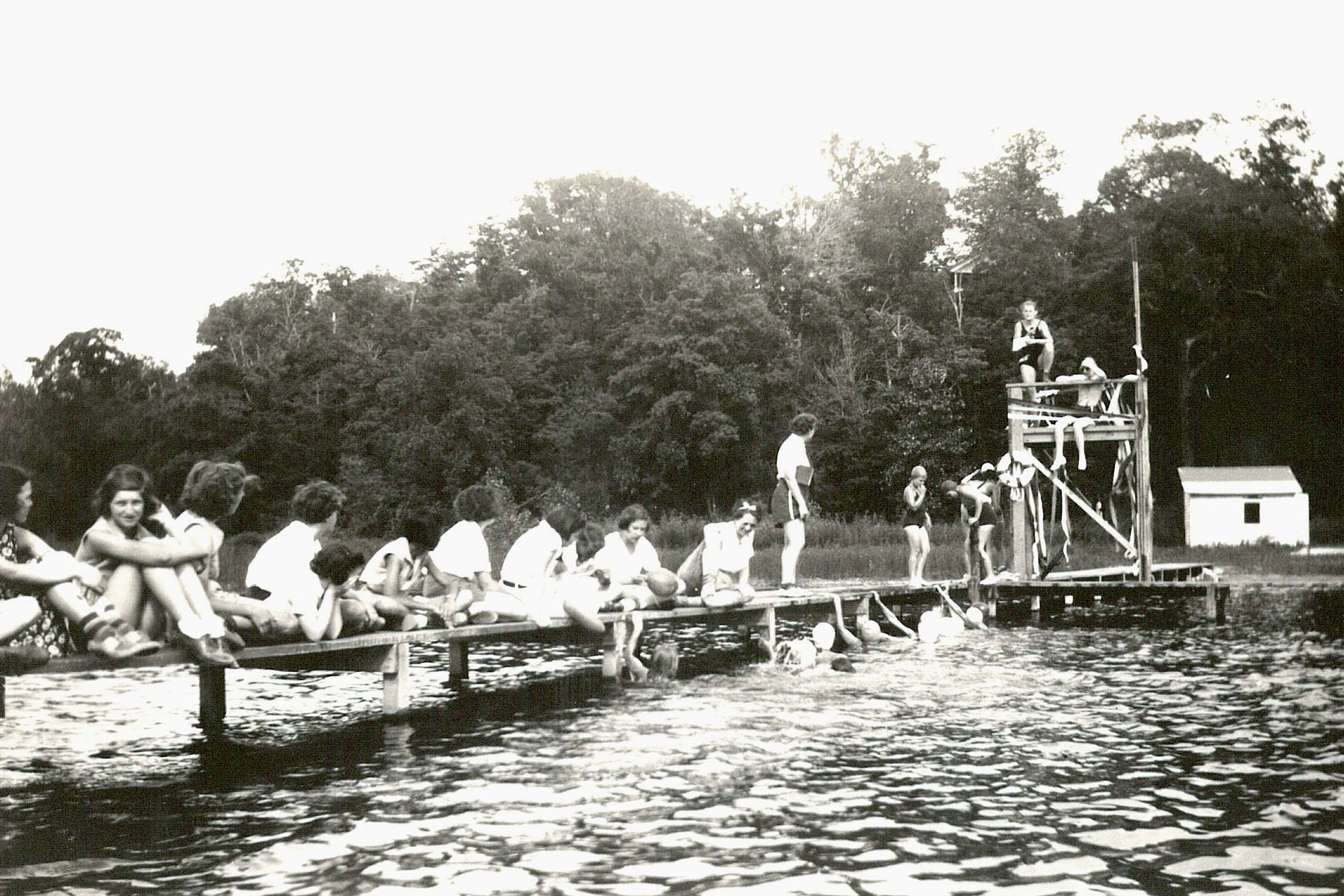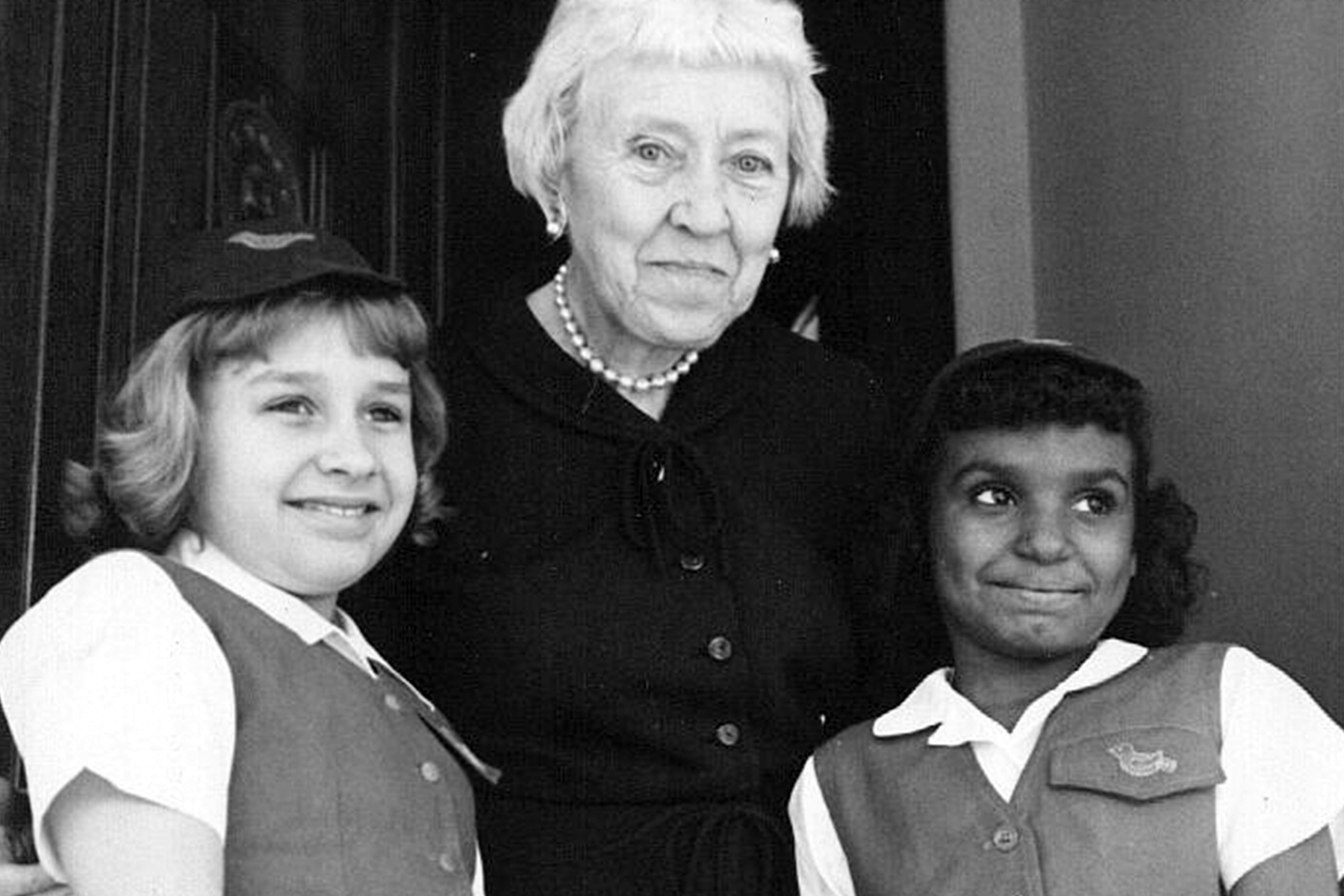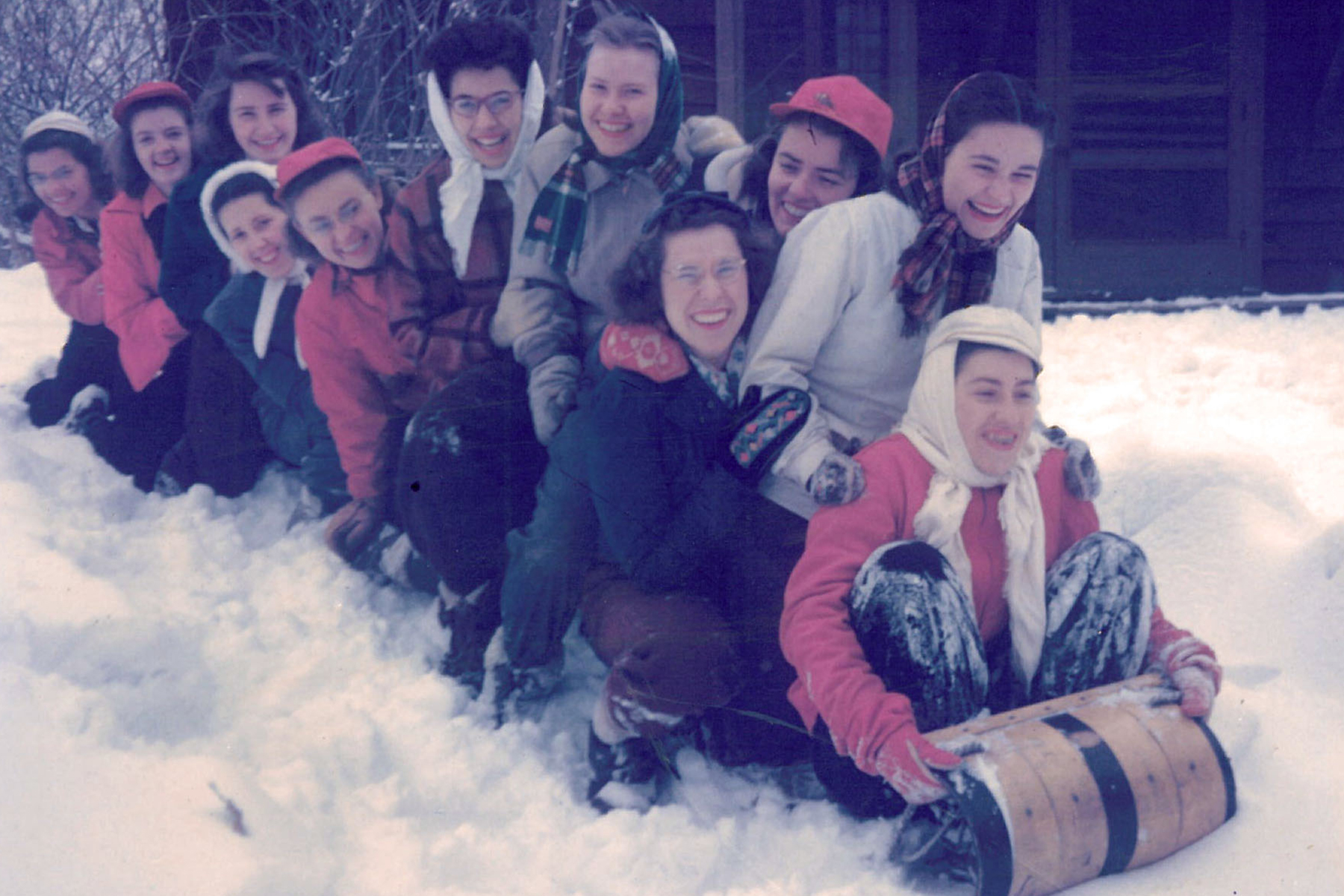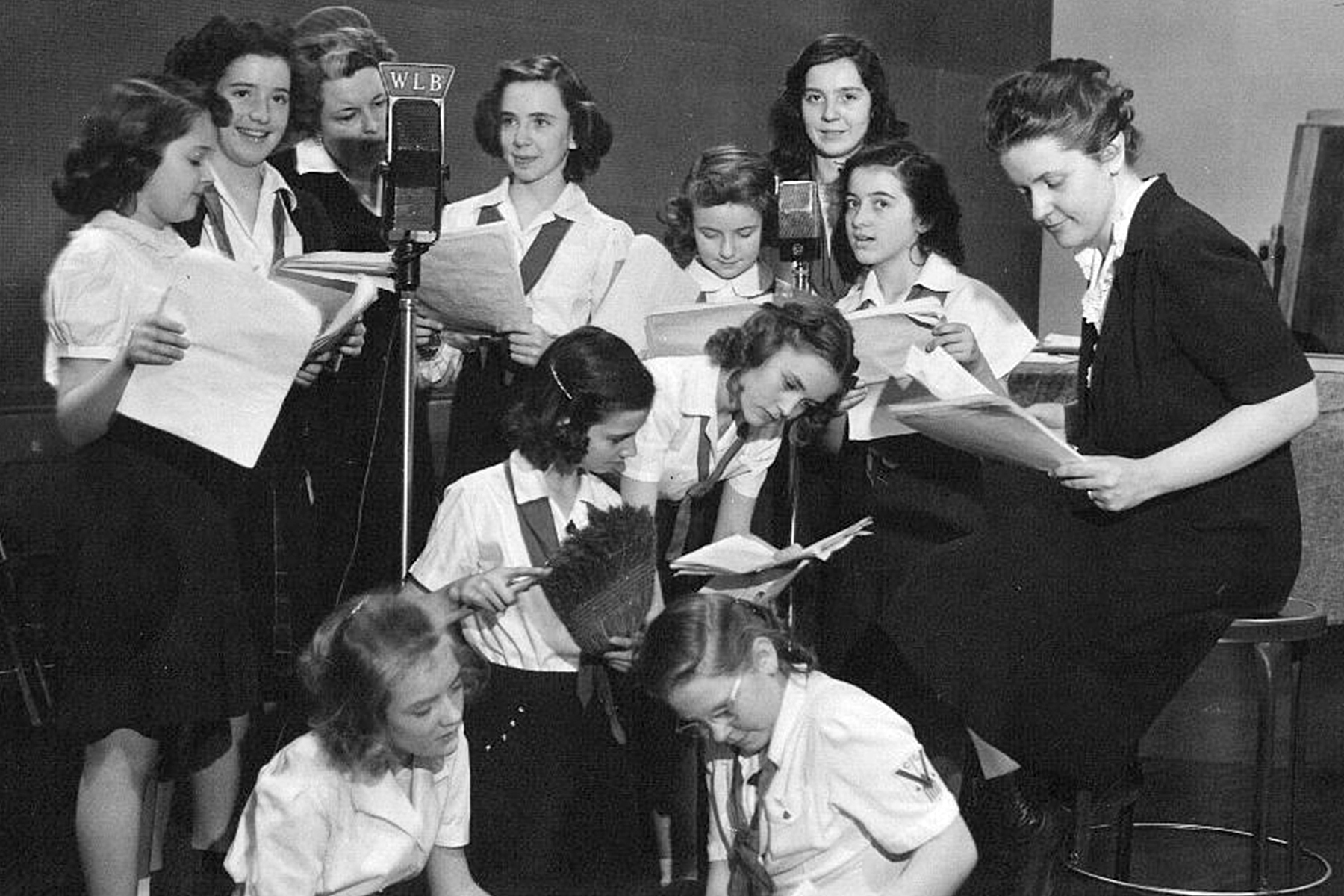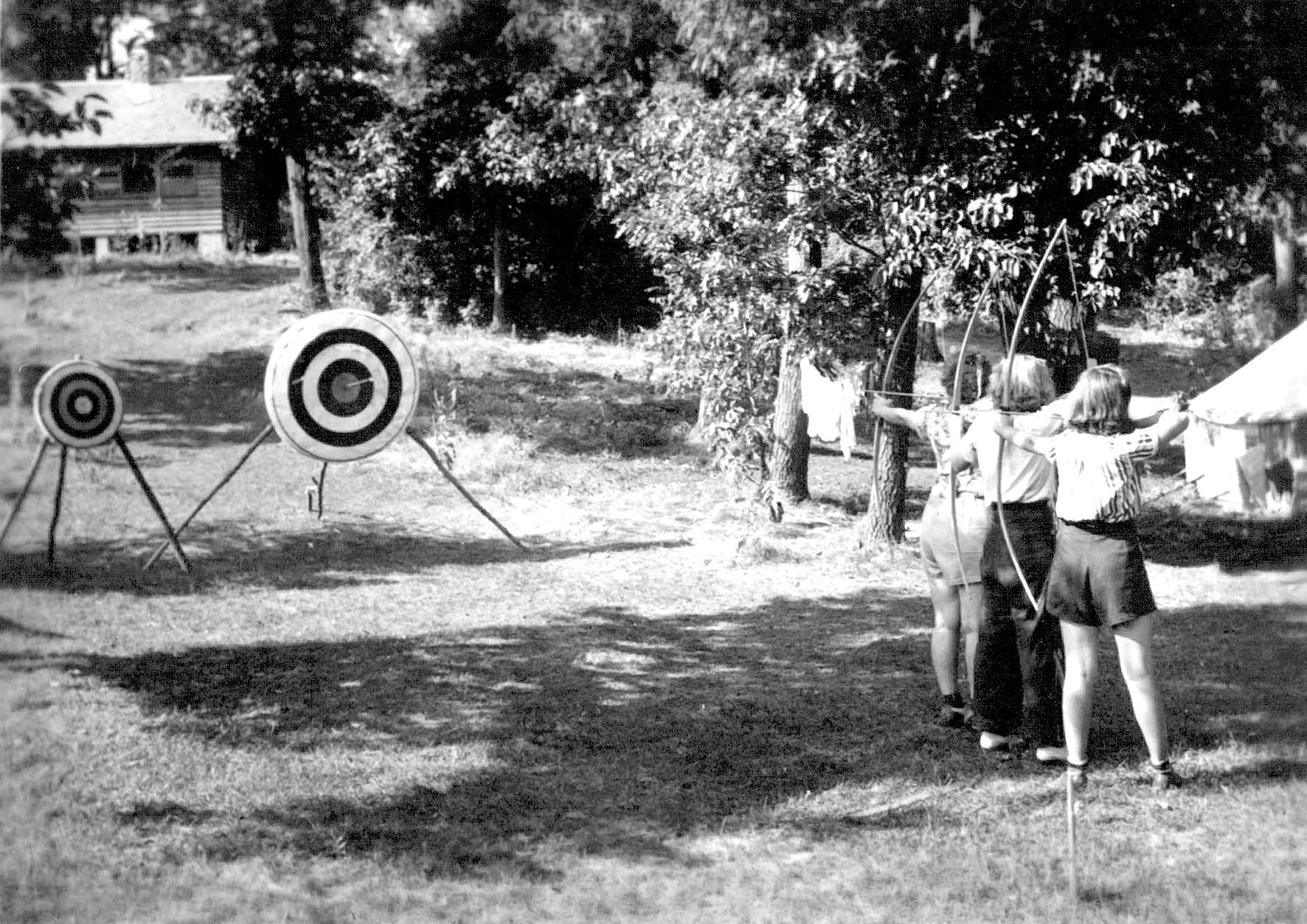Camp Fire Minnesota is located on the lands of the Dakota and Ojibwe people.
Founded in 1910, Camp Fire is the first nonsectarian, interracial organization for girls in the United States. In 1912 the first Minnesota Camp Fire groups were organized. In 1924, Camp Fire Girls in Minnesota began operating its first summer camp program in Excelsior. Founded as an organization serving girls, today, we are inclusive and open to all young people.
As we seek to recognize and amend Camp Fire’s harmful history of anti-Indigenous cultural appropriation, it is important to learn about the broader history of harm caused by camp culture and scouting programs since their inception. Thank you to historian Jennings Mergenthal for their collaboration and support in the telling of Indigenous history. Learn more here.
Camp history is based on both factual archives and verbal storytelling. If you remember it differently, please share with us at info@campfiremn.org.
Key
Land History
Indigenous History
Camp Fire National History
Camp Fire Minnesota History
Jump to...

French fur traders begin to arrive in Dakota homelands, Radisson and Groseilliers 1669
Resources
This book explores the fur trade from an Ojibwe perspective, offering insights into Ojibwe life, kinship and clan systems, technologies, and puts Ojibwe women back at the heart of this remarkable era. The fur trade was the first global trading system, and the Ojibwe people were key players in a historical period that has shaped the geography, social structures, and history of Minnesota, and the nation. More than 800 pen and ink drawings, connecting historical records and art, oral traditions, Western and Indigenous scholarship, family history, and contemporary artisans, tell this important history. End notes and bibliography included.
In 1862, four years after Minnesota was ratified as the thirty-second state in the Union, simmering tensions between indigenous Dakota and white settlers culminated in the violent, six-week-long U.S.–Dakota War. Hundreds of lives were lost on both sides, and the war ended with the execution of thirty-eight Dakotas on December 26, 1862, in Mankato, Minnesota—the largest mass execution in American history.
In this powerful epistolary novel, acclaimed Anishinaabe author Gerald Vizenor interweaves history, cultural stories, and irony to reveal a shadow play of truth and politics. Basile Hudon Beaulieu lives in a houseboat on the River Seine in Paris between 1932 and 1945. He observes the liberals, fascist, artists, and bohemians, and presents puppet shows with his brother. His thoughts and experiences are documented in the form of fifty letters to the heirs of the fur trade.
The US Government signs its first treaty, a legally binding document between nations, with the Dakota. US Representative Zebulon Pike was not given authority to make a treaty and only two out of the seven Dakota leaders who met with him signed it. The US government never paid what Pike had agreed to, and later added that the treaty was not legally enforceable.
Treaty from Kappler, other info at Treaties Matter
Resources
In August 1862 the Dakota of Eastern Sioux resorted to armed conflict against the white settlers of southern Minnesota. This study uses an ethnohistorical approach to explain why the bonds of peace between the Dakota and the whites were suddenly broken. It shows how the Dakota concept of kinsmen affected the tribe’s complex relationships with the whites. The Dakota were obliged to help their relatives by any means possible.

The US Government begins to construct Fort St. Anthony (later named Fort Snelling) at Bdote, the confluence of the Wakpá Tháŋka/Haha Wakpá (the Mississippi River) and Mnísota Wakpá (the Minnesota River). The point of the fort was to allow for a permanent military presence in the area to try and control the Dakota, and act as a first step to allowing settlers and making it a part of the United States.
The US Government coerced Dakota leaders into signing the Treaty of Traverse Des Sioux. As a result of the treaty the Dakota were moved onto a narrow strip of land along the Minnesota river, and the United States acquired thousands of acres, including the land that is now Camp Fire Minnesota.
The land acquired under the treaty is split into pieces and given out by the Government to veterans and their families. The land that would become Camp Fire Minnesota was given to Catharine Hanson, whose husband Corporal Samuel Hanson had fought in the war of 1812. She transferred this land to William H Tilton.

Dakota Uprising: A five-week conflict breaks out after starving Dakota boys try to steal food from white farmers. US soldiers engage in a genocidal effort that includes imprisoning hundreds of women, children and elders over the winter in a concentration camp on Pike Island below Fort Snelling. After the fighting subsides, Governor Alexander Ramsey orders that the Dakota “be driven forever beyond the borders of the state”
Resources
In April 1863—after the Dakota War of 1862, after the hanging of thirty-eight Dakota men in the largest mass execution in U.S. history—some 270 Dakota men were moved from Mankato, Minnesota, to a prison at Camp McClellan in Davenport, Iowa. Separated from their wives, children, and elder relatives, with inadequate shelter, they lived there for three long, wretched years. More than 120 men died.
The future camp land was sold to a farmer, John O’Brien who lived there with his wife Bridget, and their three daughters Mary, Bridget and Johannah.

The first residential boarding school for Indigenous children opens in Minnesota at White Earth. The United States would operate more than 408 boarding schools, including between 16 and 21 in Minnesota with the goal of removing Indigenous children from their families and culture, forcibly assimilating them into white American society.
Resources
With insight and candor, noted Ojibwe scholar Anton Treuer traces thousands of years of the complicated history of the Ojibwe people—their economy, culture, and clan system and how these have changed throughout time, perhaps most dramatically with the arrival of Europeans into Minnesota territory.
Recovering Native American Writings in the Boarding School Press is the first comprehensive collection of writings by students and well-known Native American authors who published in boarding school newspapers during the late nineteenth and early twentieth centuries.
The United States Government begins to establish four communities for Dakota in Minnesota: Shakopee, Upper Sioux, Lower Sioux and Prairie Island, for Dakota who did not participate in the Uprising.
Resources
A rich trove of stories told by five generations of a Dakota family. Through five generations at Pejuhutazizi (the place where they dig the yellow medicine), Teresa Peterson’s family members have listened to and told stories: stories of events, migrations, and relationships in Dakota history, and stories that carry Dakota culture through tales, legends, and myths.

The O’Brien family sells their land to former Minnesota governor John Lind, as a summer home.

Camp Fire Girls was founded by Dr. Luther Halsey Gulick, Charlotte Vetter Gulick, and their colleagues. It is the first multicultural, multiracial, nonsectarian organization to promote outdoor experiences for girls.
Resources
As the twentieth century dawned, progressive educators established a national organization for adolescent girls to combat what they believed to be a crisis of girls’ education. A corollary to the Boy Scouts of America, founded just a few years earlier, the Camp Fire Girls became America’s first and, for two decades, most popular girls’ organization. Based on Protestant middle-class ideals—a regulatory model that reinforced hygiene, habit formation, hard work, and the idea that women related to the nation through service—the Camp Fire Girls invented new concepts of American girlhood by inviting disabled girls, Black girls, immigrants, and Native Americans to join.
The Boston Tea Party, the Order of Red Men, Camp Fire Girls, Boy Scouts, Grateful Dead concerts are just a few examples of the American tendency to appropriate Indian dress and act out Indian roles. This provocative book explores how white Americans have used their ideas about Indians to shape national identity in different eras—and how Indian people have reacted to these imitations of their native dress, language, and ritual.
Charles Eastman straddled two worlds in his life and writing. The author of Indian Boyhood was raised in the traditional way after the 1862 U.S.-Dakota War. His father later persuaded him to study Christianity and attend medical school. But when Eastman served as a government doctor during the Wounded Knee massacre, he became disillusioned about Americans’ capacity to live up to their own ideals.
The first Camp Fire groups were established in Minneapolis and St. Paul. These groups included Blue Birds, a program for the youngest elementary school students. This same year, the first official handbook was published.
On July 6, a group of girls pitched a day at camp to a local Rotary Club in hopes of receiving funding to find a permanent program location. That same year, the first charter was granted to form the Minneapolis Council of Camp Fire Girls.

A committee of members from the Boy Scouts, the Rotary Club, and the Camp Fire Girls was created to investigate sites for a future campground. In August, the Rotary Club purchased 62.14 acres of land from John Lind, which is the land Camp Fire Minnesota is on today! The camp was originally named Tanadoona, which was a made-up word intended to sound like an Indigenous language. Camp Fire Minnesota ended the use of the word in 2022.
On June 12, our first summer camp season opens, directed by Miss Margaret Fletcher.

Horseback riding is added to Camp Fire Minnesota programs.
Shangra Lodge is built for Horizon Club members, this program welcomed high school aged young people.
Camp Fire Girls release its first inclusion policy: “Camp Fire must strive to give girls of all minority groups an opportunity to participate fully.”
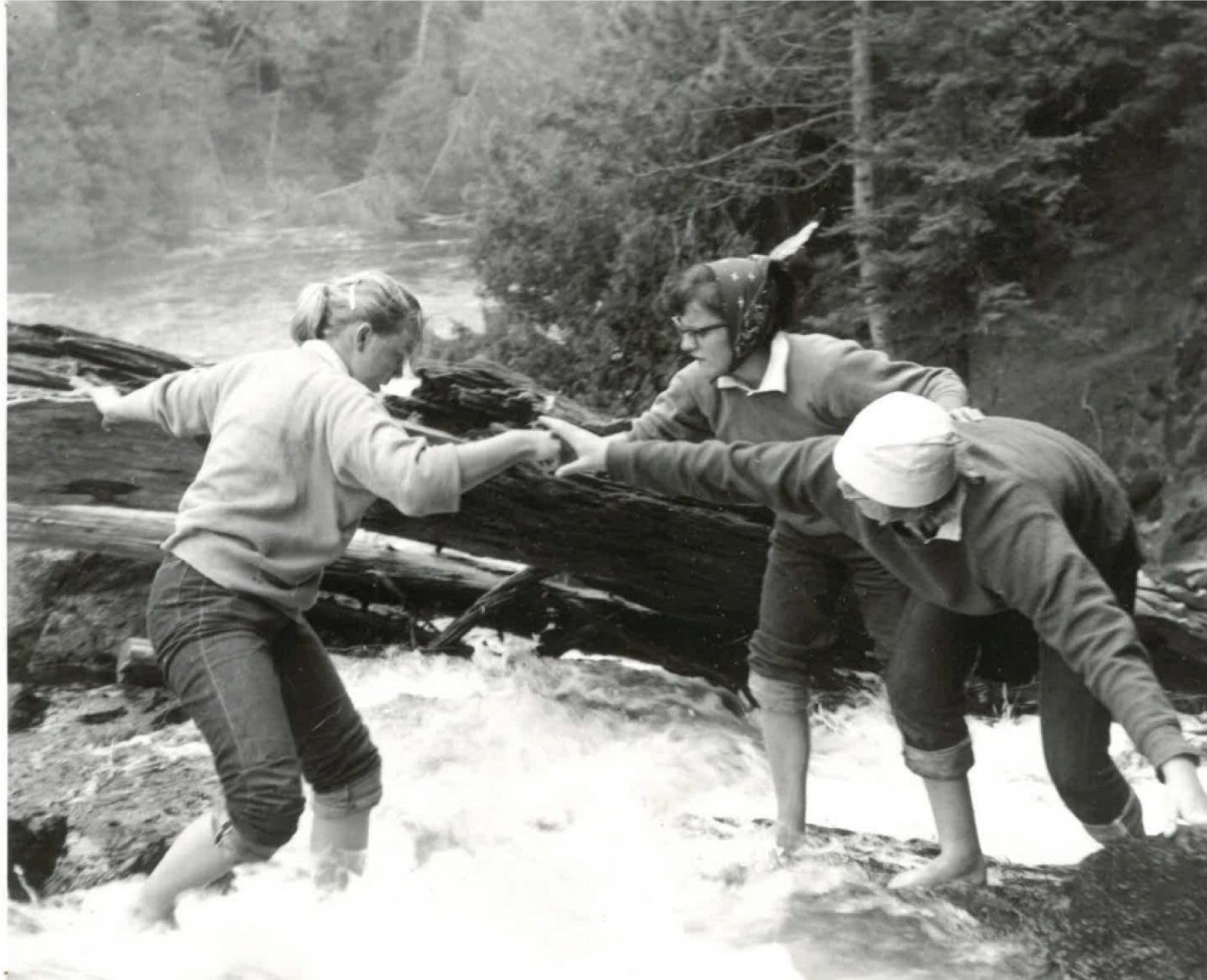
The Minneapolis Council begins to purchase land for other camps, which would continue to operate throughout the 70s and 80s.
The totem pole was created and placed at Tasiago, the old dining center.
Read moreResources
How much do you really know about totem poles, tipis, and Tonto? There are hundreds of Native tribes in the Americas, and there may be thousands of misconceptions about Native customs, culture, and history. In this illustrated guide, experts from Smithsonian’s National Museum of the American Indian debunk common myths and answer frequently asked questions about Native Americans past and present.
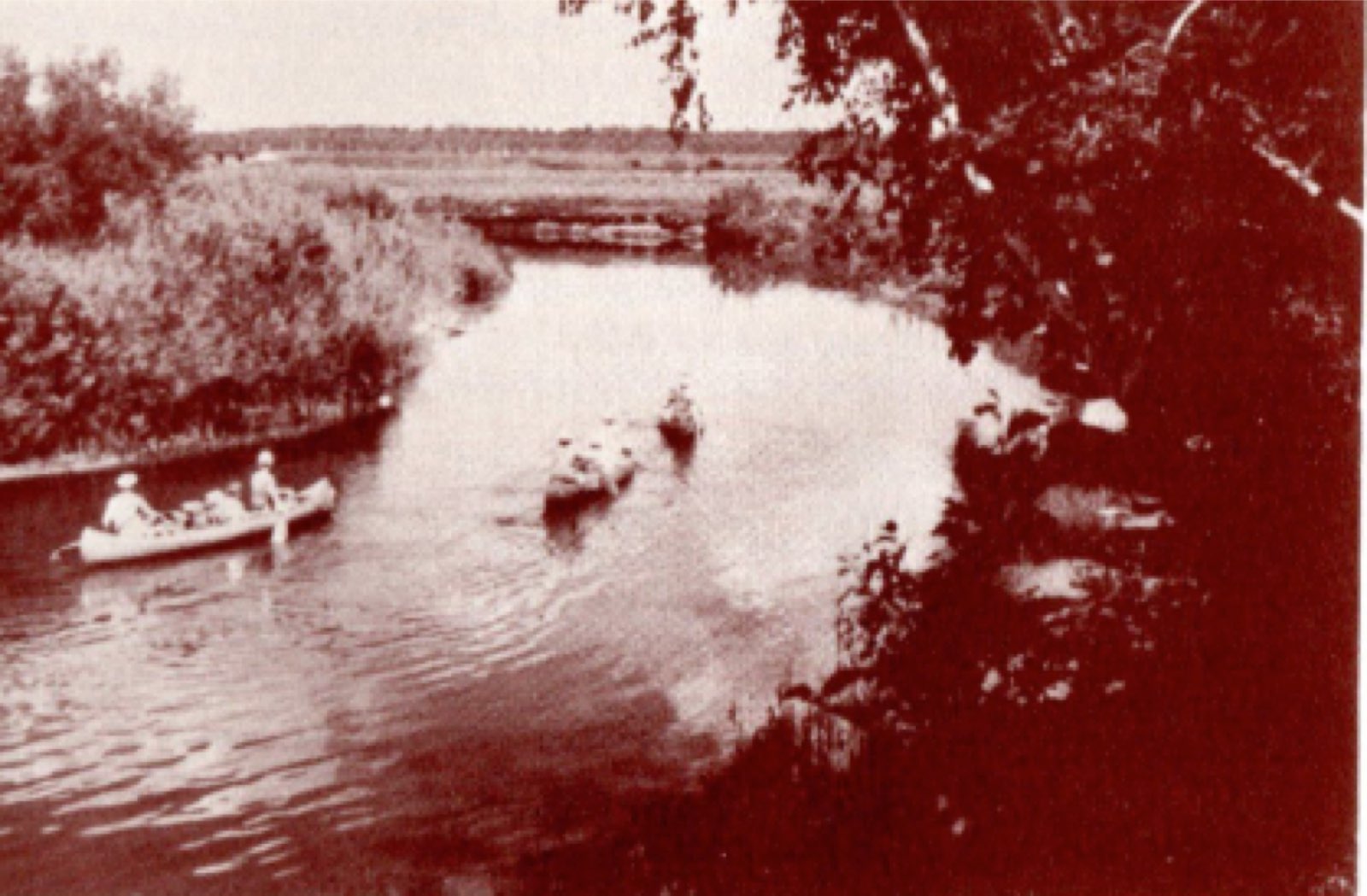
The first Northwoods Ely canoe trip is offered to older campers.
The Horizon Club Afloat Conference, for high school-age youth in grades nine through twelve sends Camp Fire Girls as ambassadors to the world aboard a Caribbean cruise ship to Puerto Rico, Jamaica, and Colombia. The Horizon program offered self-guided programs geared toward preparing youth for adult responsibilities and community service.
Northwoods trip campers bring back a signed broken canoe paddle, creating a new Camp Fire Minnesota trip tradition.
First international staff are welcomed to summer camp!
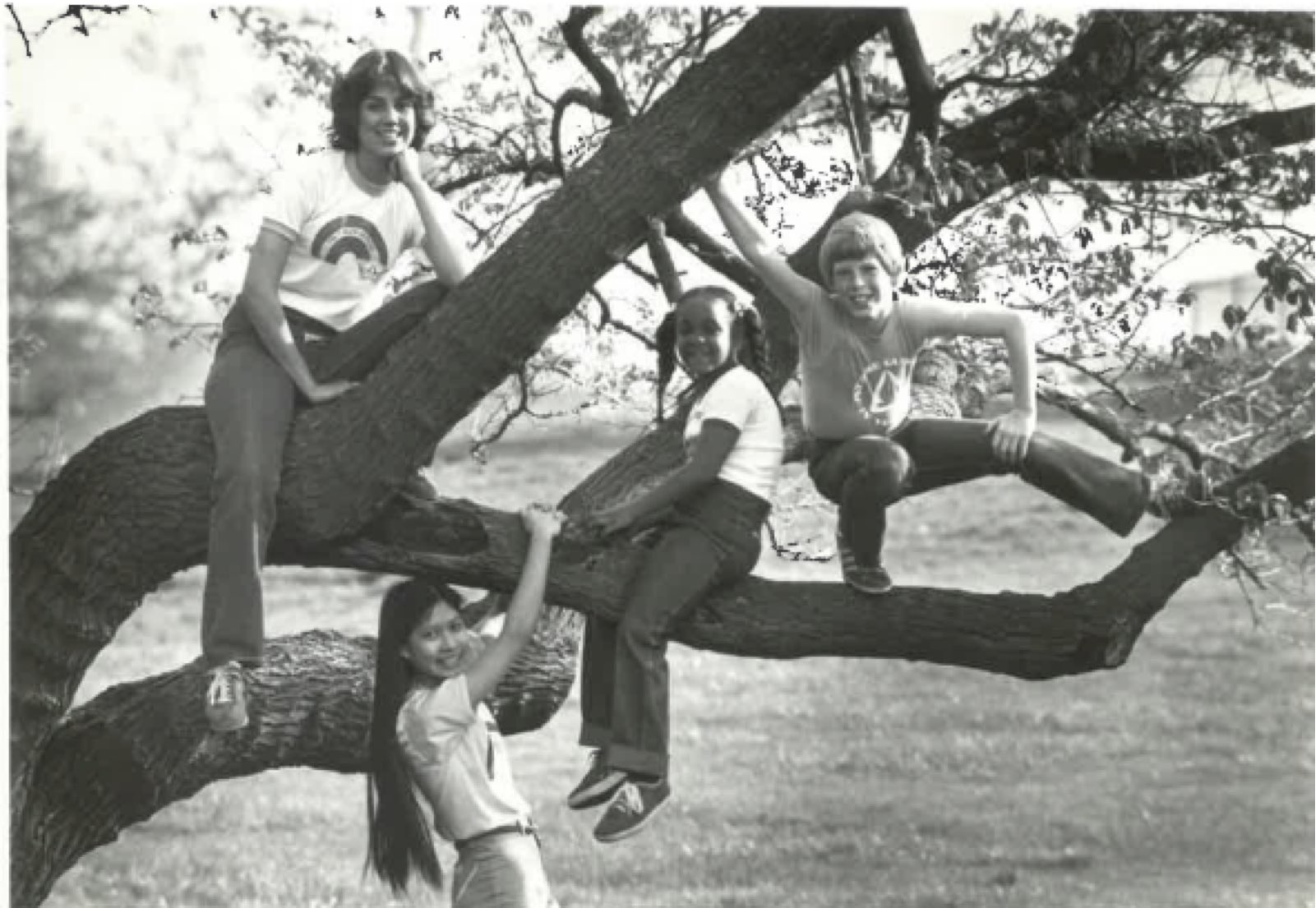
The Minneapolis Council of Camp Fire Girls becomes coeducational.
Camp Fire Girls becomes coeducational nationally and changes its name to Camp Fire, Inc. The Minneapolis Council receives the Award of Excellence from President Ford.

The Camp is gifted the adjacent 41.88 acres adjacent to Highway 41 by Jerry Bailey, which was previously Oak Grove Dairy.
The last Indigenous boarding schools in Minnesota close or transition into day schools.
Flush toilets are installed!
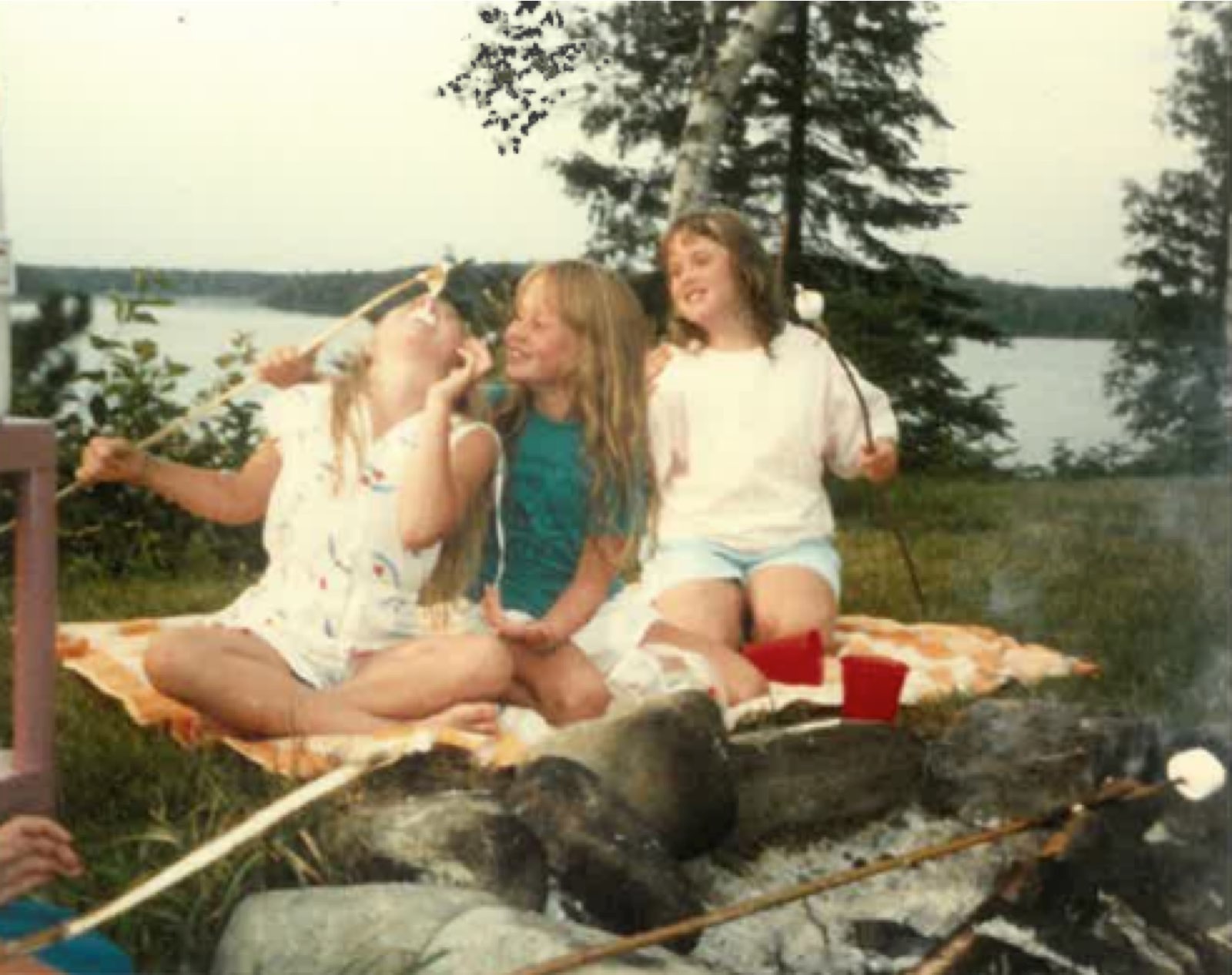
Day Camp is added to our summer program as an alternative to childcare for grades 1-6 and is run by volunteers.
Due to lack of funds, Camp Fire Minnesota’s horse program ends.
Archery is added to our programs.
Camp Fire adds sexual orientation to its Inclusion Policy. Camp Fire Congress delegates approve amendments to the bylaws replacing all gender-specific terminology with gender-neutral terminology.
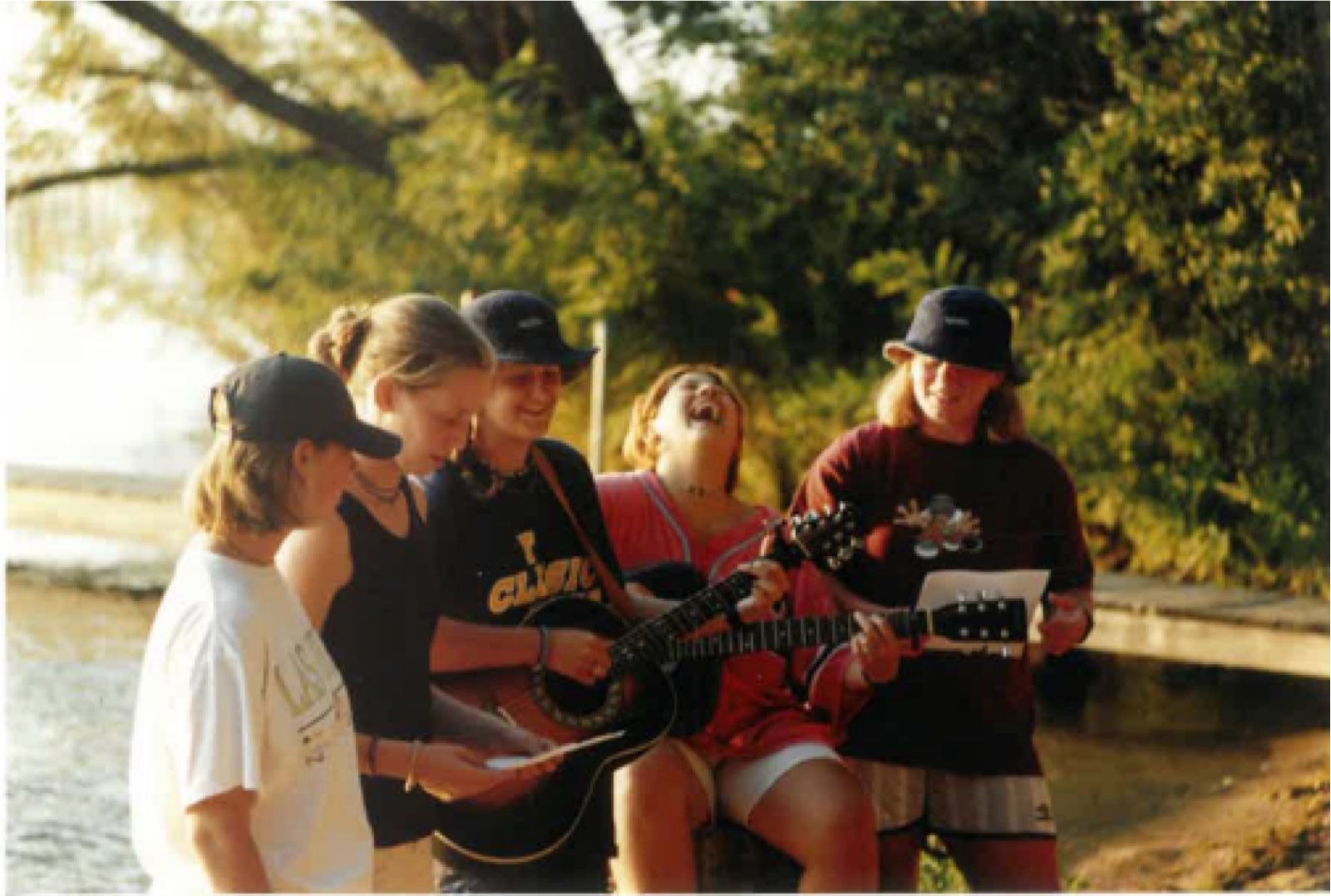
The Minnesota Camp Fire Foundation is established to ensure Camp Fire Minnesota has a strong and sustainable future.
The 40-foot climbing tower is added to our programs.

The giant swing is added to the climbing tower.
Due to decline in club program numbers, Camp Fire Minnesota creates the Partnership Model, establishing partnerships with 21 organizations. In April, the new model welcomes 900 young people.
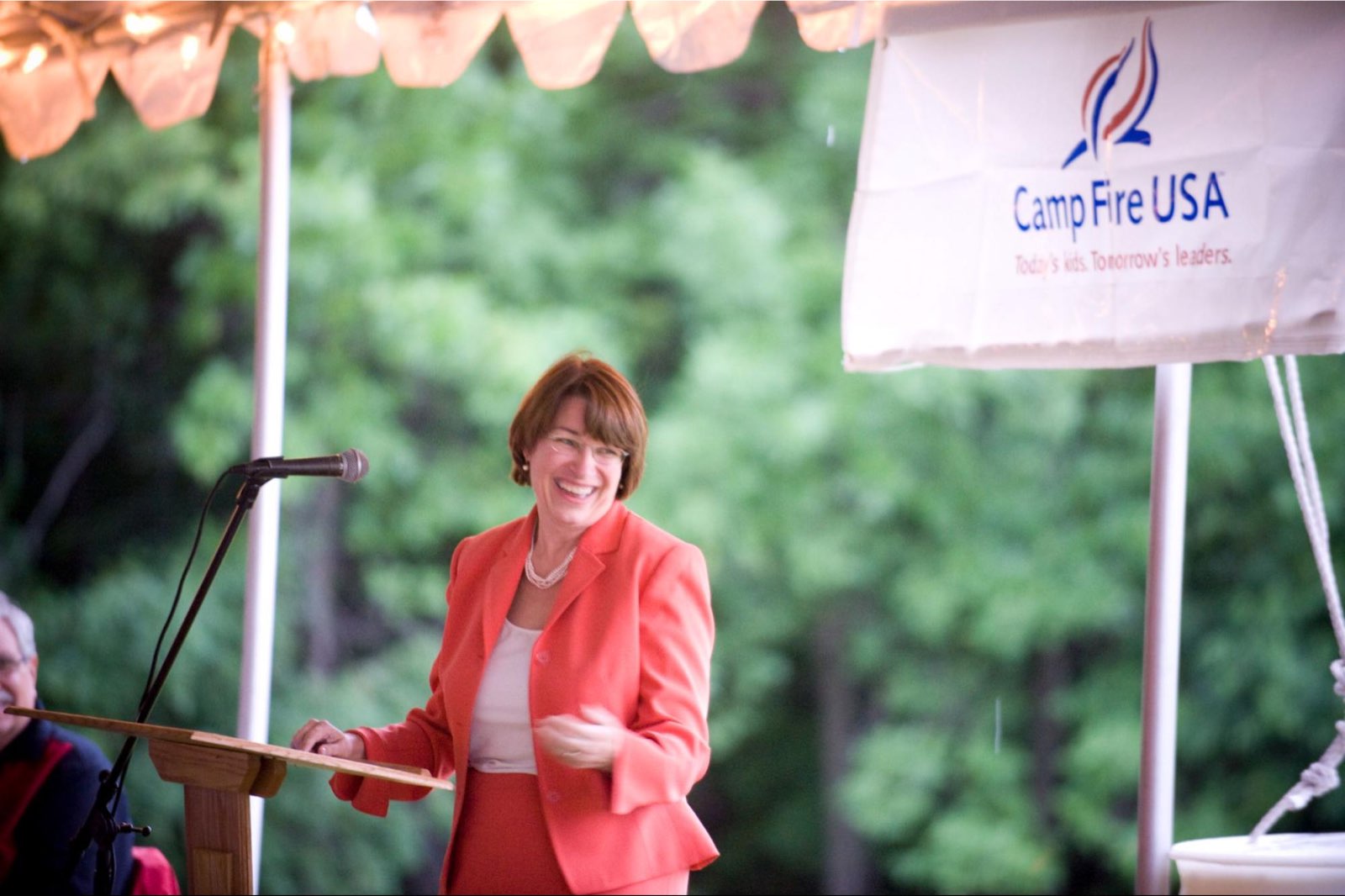
Camp Fire National celebrates its 100th birthday on March 17. Senator Amy Klobuchar, Camp Fire Minnesota alum, visits camp to celebrate alongside old and new friends.
The totem pole is removed.
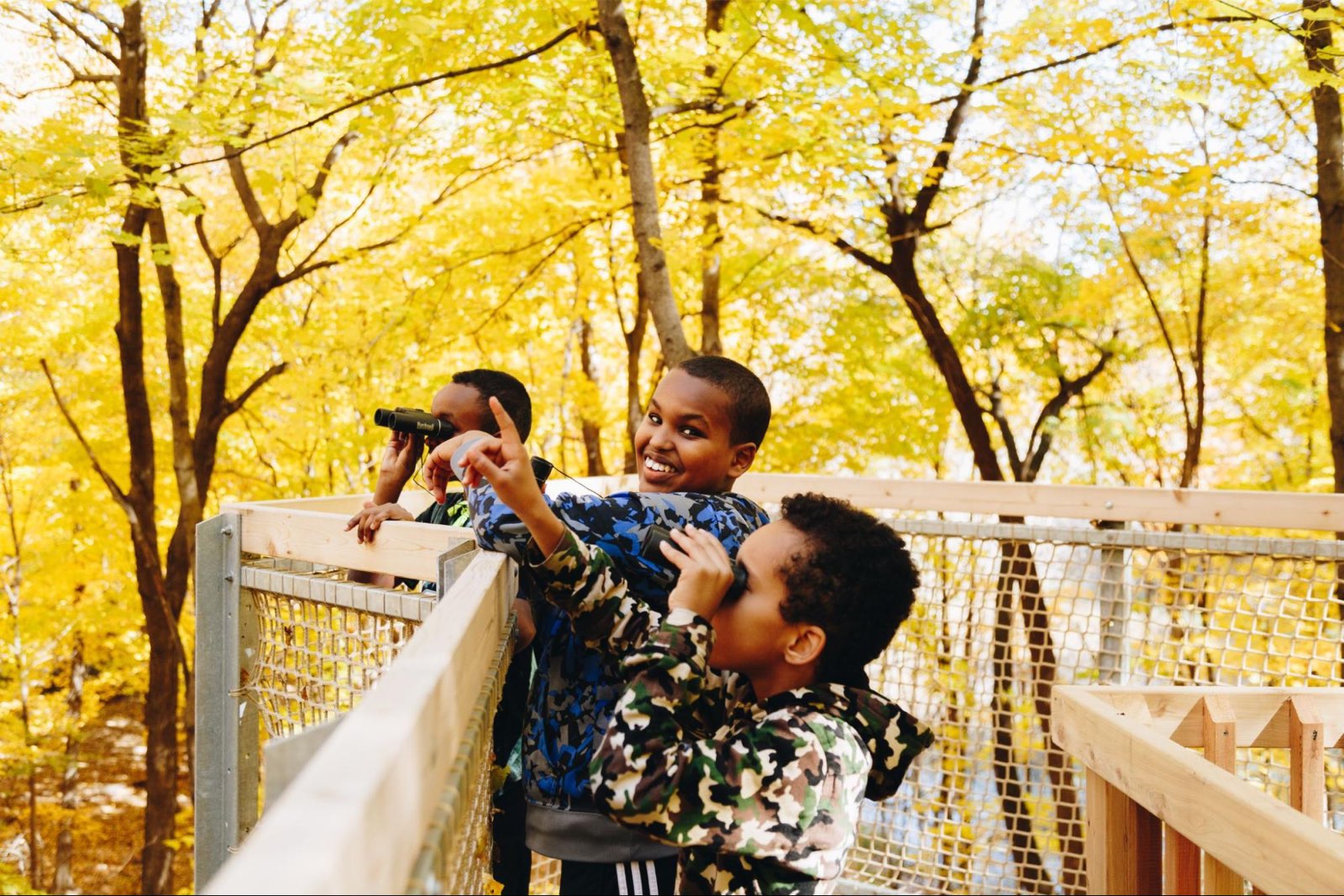
Camp Fire Minnesota’s K through 12 Environmental Education program is created, with all curricula tied to Minnesota State Education standards.

The Nature Playscape is created!
Afterschool Explorers begins in partnership with Minneapolis Community Education. Afterschool Explorers creates a pathway for students to deepen their relationship with the natural world at their school, in their community, and on-site at Camp Fire Minnesota.

Through our anti-cultural appropriation work, we officially changed the name of our property to Camp Fire Minnesota. We also created a statement of inclusion and a land acknowledgement. We recognize that these are a first step in an ongoing journey and do not, on their own, compensate for past actions.
We opened our first all-gender cabins and kicked off our Nature Preschool program in partnership with Carver County. We celebrated welcoming the largest number of young people in our program’s history, reaching 10,500 young people across all programs.
We also discovered many, mostly Ojibwe artifacts in storage that had been removed from the mansion. We learned that many of these artifacts were historical and worked to return them to the Mille Lacs Indian Museum and Trading Post, which the Minnesota Historical Society and the Mille Lacs Band of Ojibwe run.
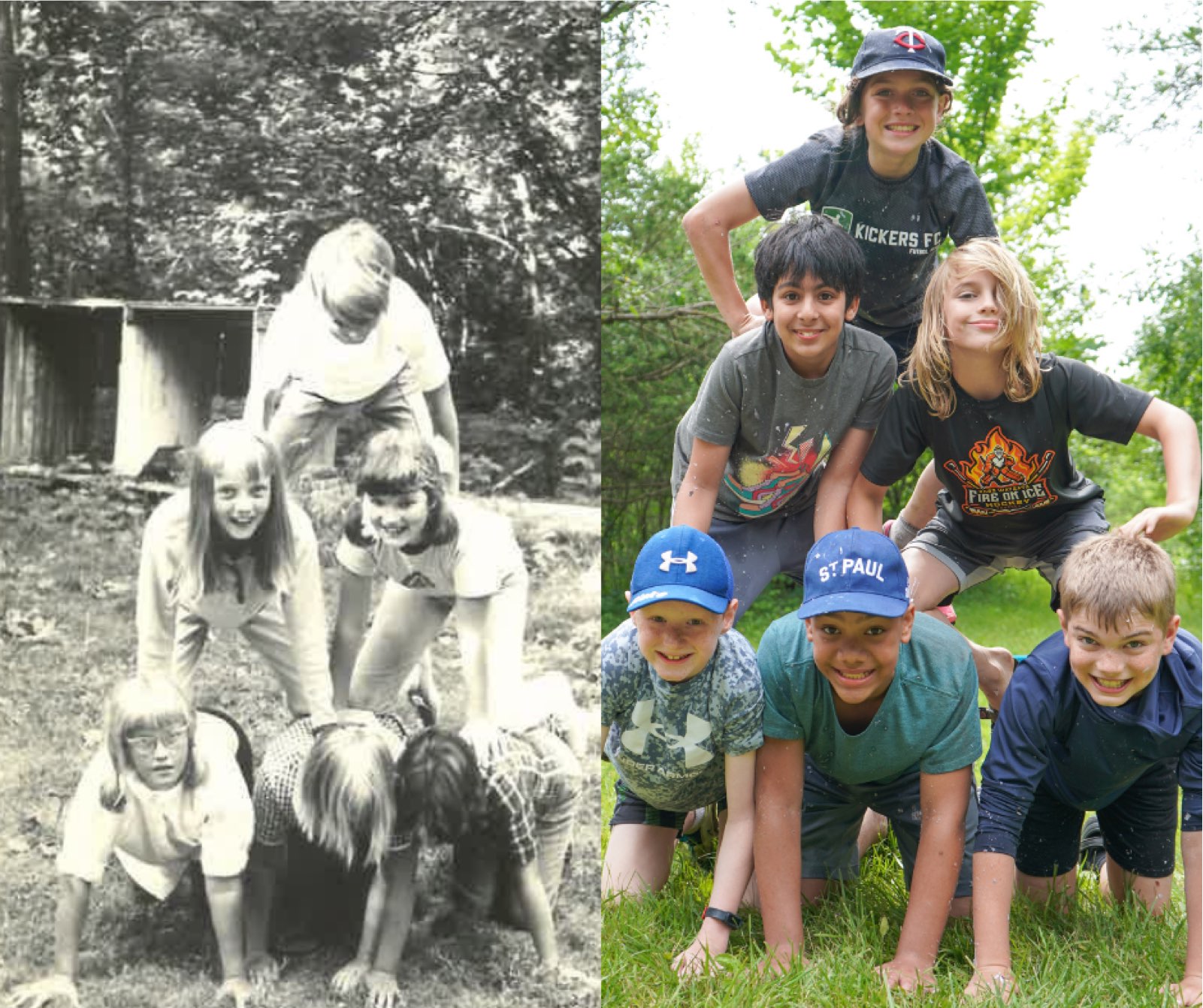
We celebrated 100 years of sparking discovery through celebrating friendship, the magic of nature, and welcoming all.
